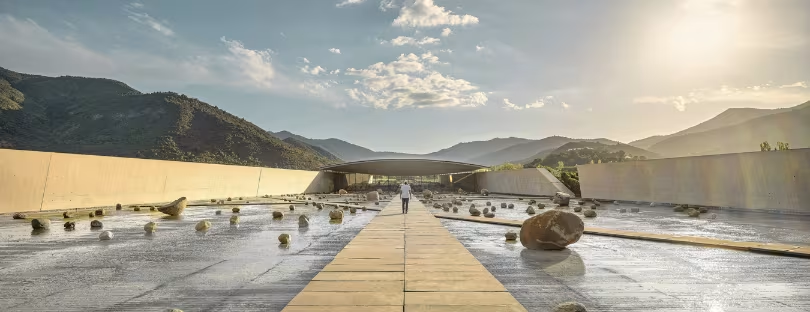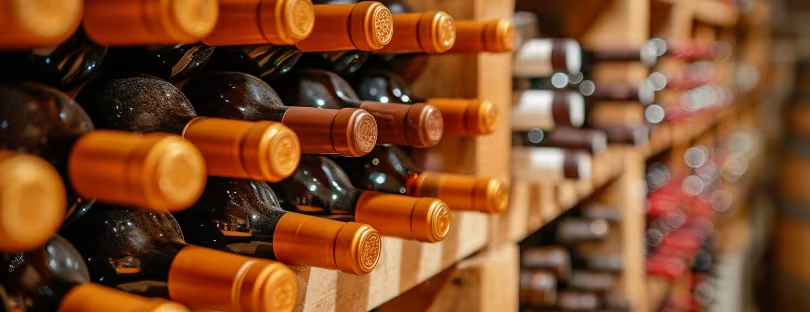
World’s 50 Best Vineyards 2025: Vik in Chile Ranks No.1
The global wine community gathered in Margaret River, Western Australia, last night for one of the industry’s most anticipated annual announcements: The World’s 50 Best Vineyards 2025. This year, Chile’s Vik claimed the No. 1 spot, taking over from last year’s winner, Bodegas de los Herederos del Marqués de Riscal in Spain. Hosted at the scenic Amelia Park Wines, the ceremony spotlighted the world’s most remarkable vineyard experiences across six continents and 15 destinations.
Below is a deep dive into the big winners, regional standouts, and what this year’s ranking tells us about how vineyard tourism is evolving worldwide.
Top vineyard of 2025: Vik, Chile
Vik isn’t just a vineyard—it’s an experience carved out of a 4,450-hectare nature reserve in Chile’s Millahue Valley. Founded in 2006 by Alexander and Carrie Vik, the estate is known for its artistry-meets-sustainability philosophy. Its architecture alone sparks conversation: a floating bronzed-titanium roof that nods to Frank Gehry and Richard Serra, perched dramatically above vineyards spread across 12 distinct microclimates.
But the design is only part of the reason Vik climbed from No.2 in 2024 to the top of this year’s list. Guests rave about Milla Milla, the estate’s glass-walled restaurant overlooking the valley, and its immersive wine experiences—from deep-dive tastings to horseback rides and treks through the nature reserve. With 22 themed rooms, seven bungalows, and a strong sustainability ethos, Vik blends luxury, landscape, and world-class winemaking in a way few others do.
Regional highlights shaping global wine tourism
Europe’s top performer: Schloss Johannisberg, Germany
Ranked No.2 globally and crowned Best Vineyard in Europe, Schloss Johannisberg stands in a category of its own. With a winemaking heritage that spans 1,200 years, it’s recognized as the world’s first Riesling winery. Visitors can wander its historic palace grounds or descend into the 11th-century Bibliotheca Subterranea—an underground library of rare wines. Historic authenticity is a strong trend in today’s wine tourism, and Schloss Johannisberg sets the benchmark.
Africa’s rising star: Klein Constantia, South Africa
This year’s Highest Climber—jumping an impressive 35 places to reach No. 6—is Klein Constantia in the Western Cape. Known for the iconic Vin de Constance, the estate offers open-top Land Rover tours and intimate cellar visits. Its recognition reflects the increasing global appreciation for South African wines and the region’s shift toward luxury-leaning visitor experiences.
Asia’s standouts: 98Wines, Japan
Asia’s highest-ranked vineyard (No.20), 98Wines in Yamanashi, offers something few vineyards can: panoramic hikes with views of Mount Fuji. The estate blends wine, craft beer, and forest-side dining — a multisensory, hybrid experience that mirrors Japan’s wider tourism trend of combining nature, gastronomy, and design.
Australasia’s newcomer: Cloudy Bay, New Zealand
Cloudy Bay (No.26), a new entry this year, represents Marlborough at its best: crisp Sauvignon Blanc, layered terroir, and immersive tastings at the Founders Cellar. Vineyard lunches at Jack’s Raw Bar, where local produce pairs effortlessly with the estate’s wines, show why experiential dining remains a core driver of vineyard tourism.
New entries and re-entries that signal market momentum
Aperture Cellars in Sonoma (No.14) secured the Highest New Entry award with its curated “Site Series” tasting — a focused, terroir-driven narrative that appeals to the growing audience of wine-curious travelers looking for deeper context rather than traditional tastings.
In total, 11 vineyards made their debut on this year’s list, including Pago de Carraovejas (No.18), Perelada (No.22), Nyetimber (No.32), Almaviva (No.34), and Viña Cobos (No.49). Another eight vineyards re-entered the top 50, showcasing just how dynamic and competitive global wine tourism has become.
How the list is selected
More than 700 wine and travel experts from 20 global regions vote for the list each year. There’s no fixed criteria—judges simply nominate the seven vineyard experiences they believe offer something exceptional, authentic, and publicly accessible. The process gives space for emerging wine regions, boutique producers, and innovation-driven estates to shine alongside historic legends.
Conclusion: What this ranking really tells us about wine tourism in 2025
The 2025 results underline a clear shift in global vineyard tourism: visitors want more than great wine—they want depth, design, sustainability, and storytelling. Vik’s win mirrors the rise of destination estates like Argentina’s Zuccardi Valle de Uco, Spain’s Marqués de Riscal, and Napa’s Opus One, where architecture and landscape play as much of a role as the wine itself.
Meanwhile, historic sites like Schloss Johannisberg and emerging innovators like Aperture Cellars prove the market isn’t leaning in one direction. Instead, visitors crave balance: heritage on one end, experimentation on the other.
According to insights from the UNWTO and the Wine Tourism Global Trends Report (2024), travelers increasingly prioritize immersive, eco-conscious, and multi-experience destinations—exactly the traits seen at this year’s top performers.
What does this mean for the industry? Vineyards that invest in sustainability, design, and curated experiences will continue to rise. And as more regions—from Japan to South Africa—gain global recognition, the future of wine tourism will only become more diverse, more experiential, and more competitive.












